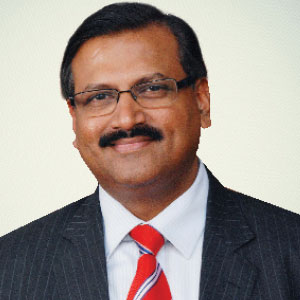Role of Educational Institutes in Training Graduates for Worldwide Employability
 It is a paradoxical situation that the institutions of higher learning like the IITs, IIMs, medical, and engineering colleges which were set up to primarily meet the requirements of the Indian Industry, are now posed with this existential challenge. This challenge may hence be reframed as 'role reengineering by institutions', post understanding the changed/changing requirements of the expectations for Industry ready graduates.
It is a paradoxical situation that the institutions of higher learning like the IITs, IIMs, medical, and engineering colleges which were set up to primarily meet the requirements of the Indian Industry, are now posed with this existential challenge. This challenge may hence be reframed as 'role reengineering by institutions', post understanding the changed/changing requirements of the expectations for Industry ready graduates.
Fundamentally, the challenge can be attributed to a couple of major themes or issues. Firstly, Indian education system has taken quite a long time to examine the limitation of rote learning and make shifts. This has resulted in a crisis marked by unemployment, qualified candidates and yet huge un-employability. The simple reason for this situation is that 'knowing' alone does not automatically lead to 'doing'. Hence, the institutions - be it at secondary, higher secondary, university levels- have to adapt to the pedagogy that enables the student to apply the knowledge and be proficient in skills that are valued by the job market.
Secondly, the institutional philosophy of teaching in a teacher-taught- student paradigm has to give way to placing the student at the centre of the learning experience. With the advancement of the Internet, MOOCs resources, the student can imbibe a large part of the knowledge content on his/her own. Hence the role of the teacher would be to check whether the minimum requirements of knowledge have been learnt, provide perspective, and share the updated content and related issues. Equally important, the faculty needs to link the knowledge with the profession/work context in the Industry. Hence, it is important for institutions, universities and even schools to ensure that there is a constant dialogue and engagement between the job providers and the job seeker- the faculty has to be at the centre of this process, so that he/she can align the triad of 'knowledge - skill - being'.
Thirdly, there needs to be a ladderisation in matching the requirements of the industry, capability of the student/learner and the institutions of learning. In order to reduce the unnecessary social compulsion of being a graduate, it is important that there are bridges for those who do not want to go for graduate studies to be able to enter the world of work, based on the skills and knowledge they have gathered so far, that is also aligned with the industry's requirements. Those who stop their education and commence work should be given re-entry bridges to study again and a new re-entry point, later into the world of work.
Fourthly, institutions need to reduce the focus of education/training only for ensuring employment. India has a large population and it is very challenging if employment is the only driver for education and higher education in particular. It is paramount that all institutions should be looking for those students who have an entrepreneurial bent of mind, guide them and link them with the innovators- entrepreneurial ecosystems. An entrepreneur can potentially generate multiple numbers of jobs which can never be matched only by focusing on employment in running organisations.

